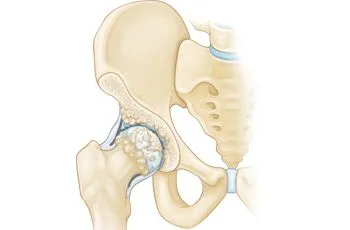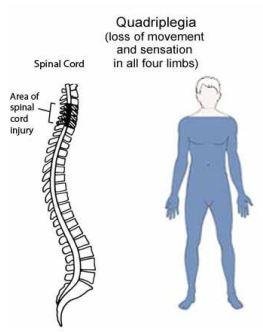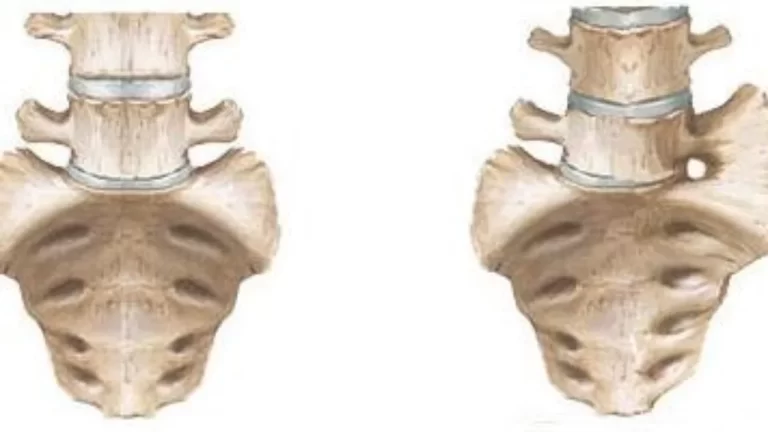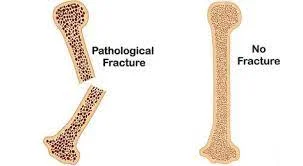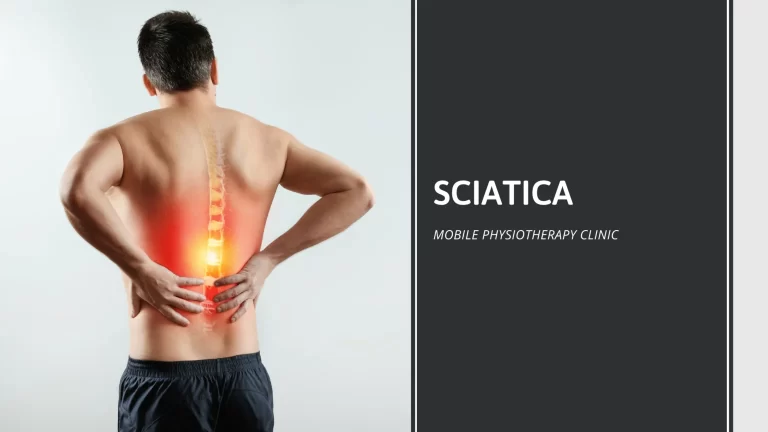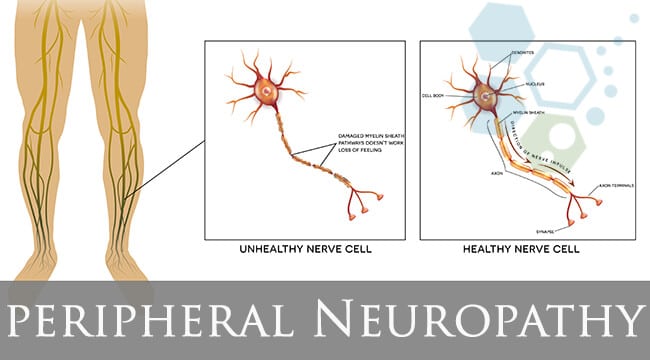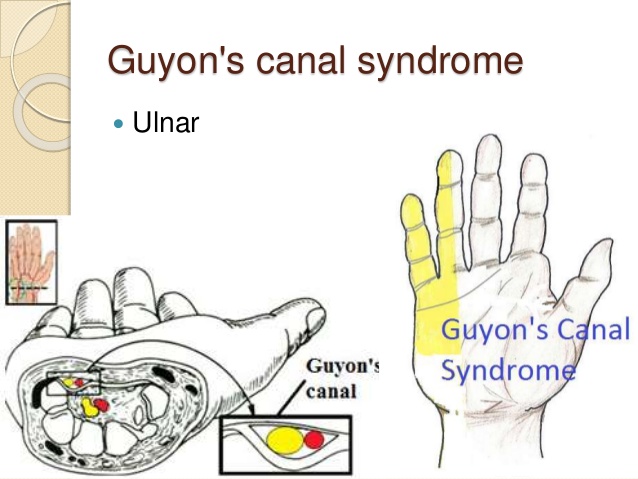Hip osteoarthritis
Table of Contents
What is Hip osteoarthritis?
- Hip osteoarthritis is a condition in which the Hip joints become inflamed and the cartilage that lines the bones become worse.
Eventually, bone-on-bone wear occurs. As the disease extends patients often experience pain, stiffness, and instability. osteoarthritis - Hip Osteoarthritis is the most common form of osteoarthritis that occurs when the protective cartilage that cushions the ends of the bones wears down continuously.
- In hip osteoarthritis, there are degenerative changes occur in cartilage, and it becomes shredded and rough. The movement of the bones along with the exposed surface is very painful. If the cartilage wears away completely it causes bone rubbing on bone. To regenerate the lost cartilage, the damaged bones may start to grow outward from their normal anatomical position and form spurs that are very painful.
- the hip joint is made up of a ball (the head of the thighbone) that fits into a rounded socket in your pelvis(acetabulum).
The hip joint is one of the largest weight-bearing joints of the body .only secondary to the knee commonly affected by Osteoarthritis. - people who suffer from hip OA their daily life becomes restricted and very tough.
OA of the hip is a common problem and diagnosis in primary care. - Hip OA affects 7%–25% of people older than 55-60.
Pain in the thigh and hip stiffness are common symptoms of OA of hip
increasing age and genetic factors are important causes of OA hip.
Anatomy of Hip joint
- The hip joint is a ball and socket joint that is the point of articulation between the head of the femur and the acetabulum of the pelvis.
Movement -Most anatomical parts of the hip work together to perform various actions. Hip exercises like flexion, extension, abduction, adduction, and hip rotation.
Movement, ROM, and Blood supply
- hip flexion from (iliacus, psoas, pectineus, rectus femoris, and sartorius.) = 0 to 126 degrees
- hip Extension from (Gluteus Maximus, Semitendinosus, Semimembranosus, and Biceps Femoris (long head)) = 116 to 0 degrees.
- hip Adduction (Adductor Magnus, Adductor Longus, Adductor Brevis, Gracilis, Pectineus) = 0 to 45 degrees
- hip Abduction (Gluteus Medius, Tensor Fascia Latae) = 45 to 0 degrees
- hip External rotation (Gluteus Maximus, Gemellus Superior, Obturator Externus, Obturator Internus, Piriformis) = 0 to 45 degrees
- hip Internal rotation (Tensor Fascia Latae, Gluteus Minimus) = 0 to 45 degrees
the internal and external rotation occurs along the same axis.
- The junction between the legs and trunk is formed by the hip joint. The ball of the hip joint is made up of the femoral head and the acetabulum forms the socket.
- Blood Supply femoral artery, superficial circumflex iliac artery, external pudendal artery
What are the Causes of Hip osteoarthritis?
The Cause of osteoarthritis of the hip has been considered as
- secondary and primary
- secondary to congenital or developmental deformities
- primary presuming some underlying abnormality of articular cartilage
others
- Idiopathic/unknown
- Previous trauma
- acetabular dysplasia; femoroacetabular impingement; inflammatory joint disease, e.g. septic arthritis; hemochromatosis, hemophilia; iatrogenic, e.g. multiple intra-articular steroid injections
Risk factors for Hip osteoarthritis
Following people are at risk of Hip osteoarthritis
- older age
- gender
- previous injury
- obesity
- certain occupations
- poor posture
- genetics
- climbing stairs
- walking
- Age
- OA directly affects on wear and tear of joints. It is more common in aged people. According to the Centers for Disease Control and PreventionTrusted Source, more than the age of 60 years people have symptoms of OA.
Gender
- OA can affect both men and women.
- According to the National Institutes of HealthTrusted Source (NIHTS), it’s more common for men at the age of 45 or more than this. After that, it’s more common in women.
- symptoms have been seen in men and women at the different ages
Previous injury
- People who have a previous joint injury are more likely to develop OA in that hip joint.
Obesity
- Being overweight increased stress and strain on every lower joint of the body mostly at the hip and knee. This increases the risk of OA. People who are overweight are particularly easily influenced by OA in the early stages.
Certain occupations
- Repetitive movements can increase stress on your joints, and occupations that require such repetitive movements can increase OA risk. Job work that fits in this category might include as a risk factor.
- kneeling or squatting hold for more than an hour a day
- lifting
- climbing stairs
- walking
- People who regularly perform in joint-intensive sports may also have an increased OA risk.
Poor posture
- Sitting or standing improperly can strain your joints. This can increase OA risk.
- Attributes, characteristics, or exposures that increase the probability of developing osteoarthritis of the hip are:
- repetitive stress and mechanical overload
- high-impact or jumping sports (eg football, basketball,4handball, hockey, wrestling, weight-lifting, and long-distance running)
Symptoms of Hip osteoarthritis
- tenderness
- loss of flexibility
- grating sensation
- bone spurs
- swelling
Advanced Hip OA
- osteophytes
- subchondral thickening
- cyst
- joint space narrowing
Pain characteristics
- Slowly progressive hip pain, or hip-related groin pain radiating from hip to thigh, buttocks, or knee after a long time sitting or standing.
- The pain can be increased at late night, at rest, or with difficult actions, decrease the range of motion, and directly affect on person’s regular life.
- stiffness mostly in the morning, after rest and sitting with cross legs.
- extra symptoms like locking, grinding and joint instability, fatigue, and psychological stress related to pain.
Differntial diagnosis
- Rheumatoid arthritis
- Septic arthritis
- Osteomyelitis
- Hip dislocation
- Gout
- Fractured neck of femur
- Referred from the lumbar spine
- Referred from sacroiliac joint
Diagnosis of Hip osteoarthritis:
Investigations
- can be diagnosed from patient history and physical examination.
- AP radiographs
- Joint space narrowing, marginal osteophytes, subchondral sclerosis, and bone cysts have been seen in Radiographic images
- XRAY shows how much space between the joints. (femur and acetabulum)
- no space and abnormally small space indicates a loss of cartilage which is seen in XRAYS.
Special tests
- Thomas test
- Trendelenberg sign
- FABER test
- FADER test
- Ober’s test
- Log roll test
- Stinchfield test
- Ely’s test
Physical Examination
A physical examination includes
Observation
Subjective assessment
- Complaints of pain, deformity, stiffness, and/or limp
- Previous history that causes hip pain (congenital or childhood problems, previous trauma)
- Physical examination in Standing and Supine (look for leg length discrepancy, antalgic gait, and Trendelenberg gait)
- Objective observation (posture, deformities, muscle atrophy)
Palpation
- Tenderness at the hip
- Pain and sensitivity of the greater trochanter
Range of motion
- Early signs of hip osteoarthritis are limited abduction and internal, and external rotation. As the disease extends, flexion, extension, and adduction become more restrictive.
- painful at end of the available range of motion in affected people.
- Crepitus feels with every action of the hip
Treatment of Hip osteoarthritis
- treatment of OA hip changes according to the severity of arthritis. both pharmaceutical and non-pharmaceutical modalities are recommended for the satisfactory management of the condition.
- Physiotherapy plays an important role in effective exercise programs for patients suffering from OA hip.
- Hip OA treatment includes exercises, weight loss training (if appropriate), and education complemented by topical or oral nonsteroidal anti-inflammatory drugs in those without contraindications.
- Intra-articular steroid injections provide short-term pain relief and duloxetine has demonstrated efficacy. Opiates should be avoided.
- Surgical treatment: Total hip replacement – The option in patients with symptomatic and radiographic osteoarthritis characterized by refractory pain and disability; Osteotomy and hip resurfacing – with symptomatic secondary OA because of acetabular dysplasia, femoroacetabular impingement, varus or valgus deformity should be considered in younger patients than older.
Physiotherapy treatment in Hip osteoarthritis
- Physiotherapy plays an important role in the treatment of patients who suffer from OA of the hip.
- The goal is to maintain or improve strength, mobility, and improve possible range of motion.
- Physiotherapy also helps with pain relief and achieves normal movement in the hip and legs and also addresses pain management and functional adaptions.
- specific exercise programs have been shown to decrease pain and improve joint range of motion.
Education
Role of physiotherapy and benefits of its interventions
- benefits of weight reduction
- Self-management of pain: Use of modalities such as heat and cold (cryotherapy) Relaxation techniques
- Assistive devices
- Personal experience
- Symptoms
- Perceived benefit of exercising
- improve the Quality time of sleep
- Mental status
- the experience of Exercise
- Place wedge-shaped pillows under your hip to provide additional support. If you don’t have a wedge-shaped pillow, try folding a pillow or blanket and create a wedge shape then give a perfect placement.
- put a pillow between your knees to reduce pain across the hip while sleeping.
- take one or more pillows under your knees.
- this help to decrease hip pain and gives immediate relaxation while sleeping.
Exercise for Hip OA
Hip and knee flexion
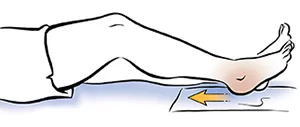
- To do this exercise please take a supine position on a bed or soft mat to keep your leg straight.
- Now gradually slide the heel towards your Hip and maintained for 5 to 10 seconds
- Then straighten the leg.
- Repeat 10-15 times, two times a day.
- Exercise must be pain-free range.
Hip abduction
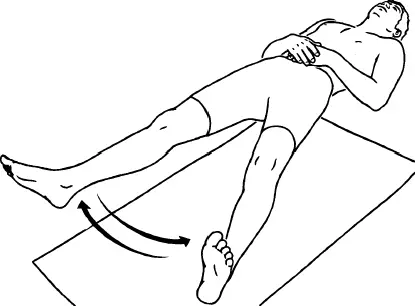
- To do hip abduction please take a supine position.
- keep your both legs straight at the starting position.
- slide one leg opposite to another leg sideways then slide backward.
- the whole movement should be done in a pain-free range.
- do this exercise 10 -15 repetitions and 2 times a day.
Standing leg exercises
- Toe ups
- leg-sideways lift
- knee bends
Toe ups
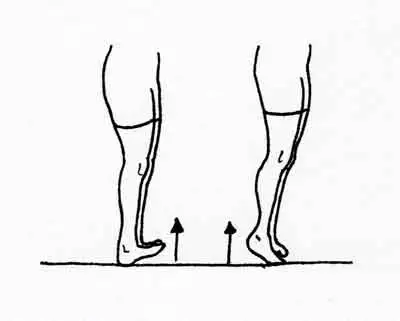
- standing on your toes by holding any wall or chair for support if possible.
- then back to heel by holding it for 5 to 7 secs.
- do it 2-3 times a day with 12 to 15 reps.
Knee bends
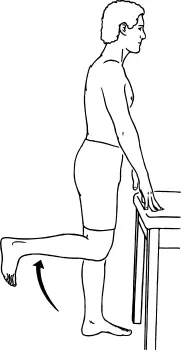
- exercise is done in a standing position.
- hold on to support to keep balance during exercise.
- then bend your knee slowly. and bring it back to normal.
- exercise range should be pain-free.
- do it 2-3 times a day with 12 to 15 reps.
Leg-sideway lift in standing
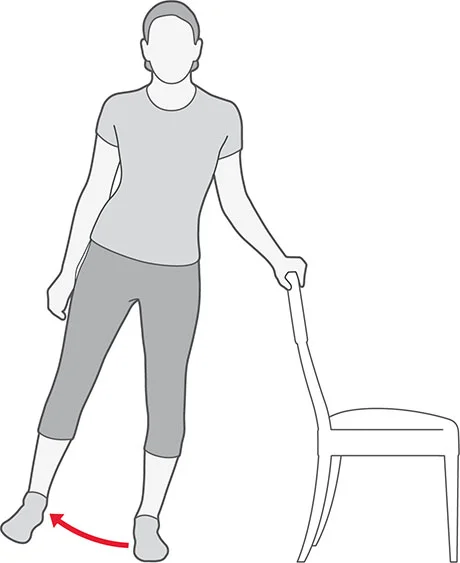
- Stand straight with your legs shoulder-width apart and holding on to support the wall.
- Lift the leg sideways, hold for 3-5 seconds, and bring it back.
- Keep your trunk stable during the exercise.
- do this exercise 10 -15 repetitions and 2 times a day
Clamshell
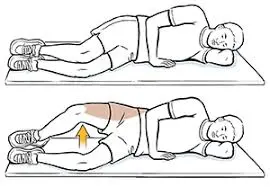
- Lie on your side, with your affected hip on top. Keep your feet and knees together and your knees bent.
- Raise your top knee, but keep your feet together.
- Hold for 6 seconds.
- Slowly lower your knee back down.
- Repeat 8 to 12 times.
- Switch legs and repeat steps 1 through 5, even if only one hip is sore.
Other exercises include
- yoga
- cycling or using a stationary bike
- swimming or water exercise
- strengthening exercises
- walking
stretching
Half-Kneeling Hip Flexor Stretch
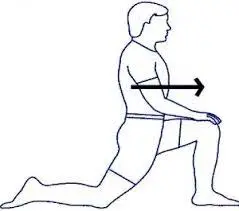
- starting position- kneeling on the floor.
- then bring your right leg in front of you in which position your right thigh is parallel to the floor, bend your knee to 90 degrees and keep your foot planted on the floor.
- Leave your left knee on the floor, and remind that your tibial bone is pointing straight back (not tilted the left or right).
- contract your glutes, put your hands on your hips, then bring your thumbs downward and feel your pelvis tuck under you.
- keep your back straight, and shift your weight forward until you feel a stretch through the front of the left thigh and groin.
- reach your left arm up overhead and slightly toward the right For an even deeper stretch
- Repeat on the other side.
90/90 hip Stretch
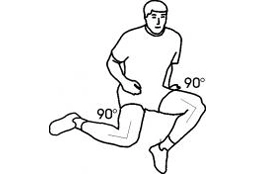
- Sit on the floor in a position where your right leg is in front of you and your knee is flexed at a 90-degree angle, so the bottom of your foot is facing the left wall.
- Extend your left leg out to the side and flexed your knee at a 90-degree angle, so the bottom of your foot is facing the back wall.
- Check your back remains straight, and extend your arms straight out in front of you making a Square of your shoulders to the front Your fingertips should face the front wall.
- Place your fingertips on either side of your right tibial surface for balance. Think about falling or sinking both hips into the floor.
- lean your chest as far forward as you can go without collapsing your upper body or losing the connection between your hips and the floor For a deeper stretch.
- Repeat on the other side.
Supine Hip Flexor Stretch
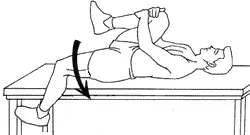
- Lie on your back on the right edge of your bed keeping your both legs extended on the bed.
- Bend your left leg, with your knee pointing upward, and make your foot flat on the bed. keeping your back pressed flat against the bed.
- keeping your back flat, Let your right leg fall off the side of the bed.
- keeping your back flat and your right leg hanging off the bed and Bend your knee back as far as you can.
- grab your left knee and pull it toward your chest For an even deeper stretch.
- Repeat on the other side.
Side-Lying Hip Flexor Stretch
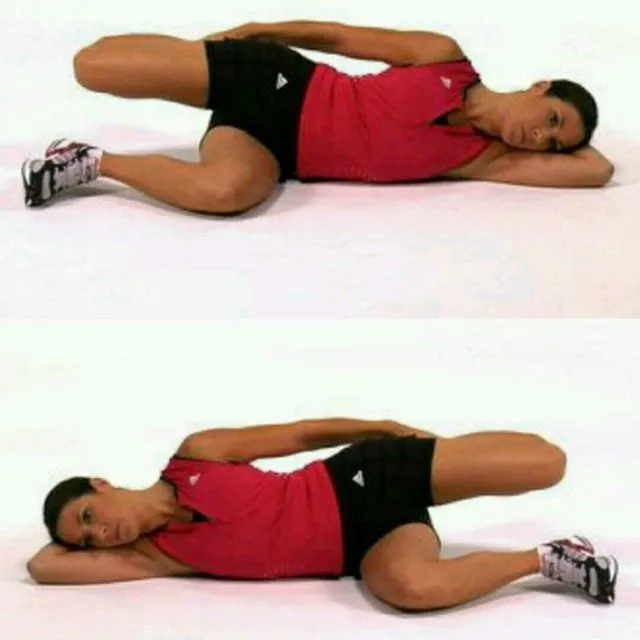
- Your thighs and lower leg should form a 90-degree angle. for that Lie on the floor on your left side with your knees bent so they’re in line with your hips.
- Move your right foot backward and gently push the top of the ankle with your right hand. and maintain balance throughout the movement.
- Slowly and gently pull your foot with your right hand, bringing your leg around behind you while keeping your pelvis tucked under, and make sure not to arch your back. You should feel a stretch in your hip flexor on the right side and the front of your thighs
- Repeat on the opposite side.
Standing Iliotibial Band Stretch
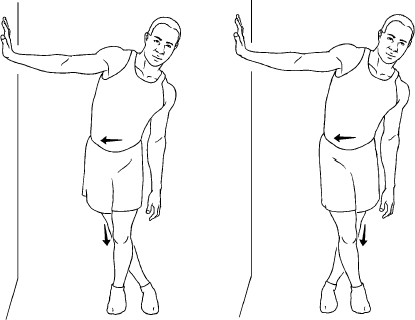
- stretching the outside of the hip.
- standing with the support of the wall.
- Cross the leg that is near the wall behind your other leg.
- take your hip toward the wall until you feel a maximum stretch at the outside of your hip. Hold the stretch for 30 seconds.
- Cross the leg behind your other leg which is further from the wall.
- then repeat the entire sequence four times. (both legs)
Knee-to-Chest Stretch

- this exercise Stretches your buttocks.
- Lie on your back on the floor or ground with your both legs extended straight out like a supine position.
- Bend one knee and grasp your shinbone (tibia) with your hands.
- slowly pull your knee toward your chest as far as you feel comfortable.
- Hold the stretch for 30 seconds and relax for 30 seconds.
- Repeat on the opposite side, then pull both legs together. Repeat the entire sequence four times turn by turn.
- Tip: Keep your lower back pressed into the floor or ground.
Hamstring Stretch
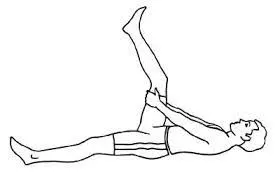
- This exercise stretches the back of your thigh and just behind your knee
- Lie on the floor with both knees completely extended.
- Lift one leg off of the floor and bring the knee toward your chest.grasp your hands behind your thigh below your knee.
- Straighten your leg and then pull it slowly toward your head until you feel a maximum stretch. (If you can’t grasp your hands behind your leg, use a towel around your thigh. Grasp the ends of the towel and pull your leg toward you slowly.)
- Hold for 30 seconds and then relax.
- Repeat on the opposite side then repeat the entire sequence three times. (in both legs)
- Tip: Don’t pull at your knee joint.
Hip Extension

- this exercise Strengthens your buttocks.
- Lie on your stomach on a firm, flat surface with a pillow under your hips just above the knee. Keep your head, neck, and upper body should be relaxed.
- Bend one knee 90°.
- Lift your leg straight up.
- Slowly lower your leg down to the floor, counting from 1 to 5.
- Do 10 reps; then complete the exercise on the other side.
- Tip: Begin with 10 reps, using only your body weight; and progress to 15, When that becomes easier, add ankle weights in one-pound increments. Each and every time you increase the weight, start again at 10reps, working back up to 15.
Which things could help during severe OA hip?
- A walking aid provides additional joint support by decreasing the pressure on the hip. It can also reduce the risk of falling by giving support and balance.
- like A cane, the cane should not too tall or short. Use the cane on your “affected” side.
- the cane should’ve been kept at an appropriate distance.
- a walking frame
- The perfect stick provides additional joint support by decreasing the pressure on the hip joint.
Other therapies for treating hip pain before surgery
TENS (transcutaneous electrical nerve stimulation)
- for short-term pain relief like muscle pain, and stiffness, how TENS can scramble your brain’s perception of pain by stimulating nerve supply.
Interferential Therapy (IFT)
- stimulation is very useful in the treatment of circulatory and muscular disorders, stiffness of joints, and inflammation.
- interferential current therapy is an important option for pre-operative conditions mostly.
Short Wave Diathermy ( SWD )
- It is an Electric Machine that is useful in treatment that uses electromagnetic energy to produce deep heating in joints and soft tissues to give relieve pain.
- It uses a high-frequency electric current to stimulate the generation of heat within body tissue.
Ultrasound (US)
- If any trigger point is present we can give this therapy. this is very effective than others to treat trigger points.
other therapies
- acupuncture
- cognitive behavioral therapy (CBT)
- application of heat pads
What types of exercise should avoid during OA Hip?
- There are particular types of exercises that people should avoid with hip arthritis.
- Some exercises increase joint contact stress, putting the joints under more pressure than trusted Sources and potentially resulting in hip pain in a person with OA.
- exercises that involve repetitive hip flexion, the motion can bring your hip or leg up toward your chest.
- Running, on uneven surfaces. like,
Exercises that create sudden changes in movement and direction
- Sports and exercises that involve quick stops and movements .like tennis and basketball give sudden stress to joints.
Bending too much at the hip
- Most exercises for hip pain will involve bending at the hips more than any joints, those exercises put too much strain on your hips. You should avoid this type of exercise that causes further strain and pain when bending at the hips.
- do exercises that require more bending at the knees than the hips. These may help take some strain off the hips while strengthening the muscles connected to them.
High-impact exercises
- Step aerobics and other workouts that involve jumping significantly impact the hip joint.
Weightlifting exercises
- Bending too much at the hip, Strengthening exercises, which include heavy weightlifting, can be helpful for people who have hip arthritis.
- However, if a person does not perform the exercises in the perfect manner may worsen pain or cause further joint injury because Lifting heavy weights with the legs puts a severe strain on the hips.
Over-stretching
- Remaining in one position for too long causes severe hip pain.
- routine Stair climbing.
Hip replacement surgery
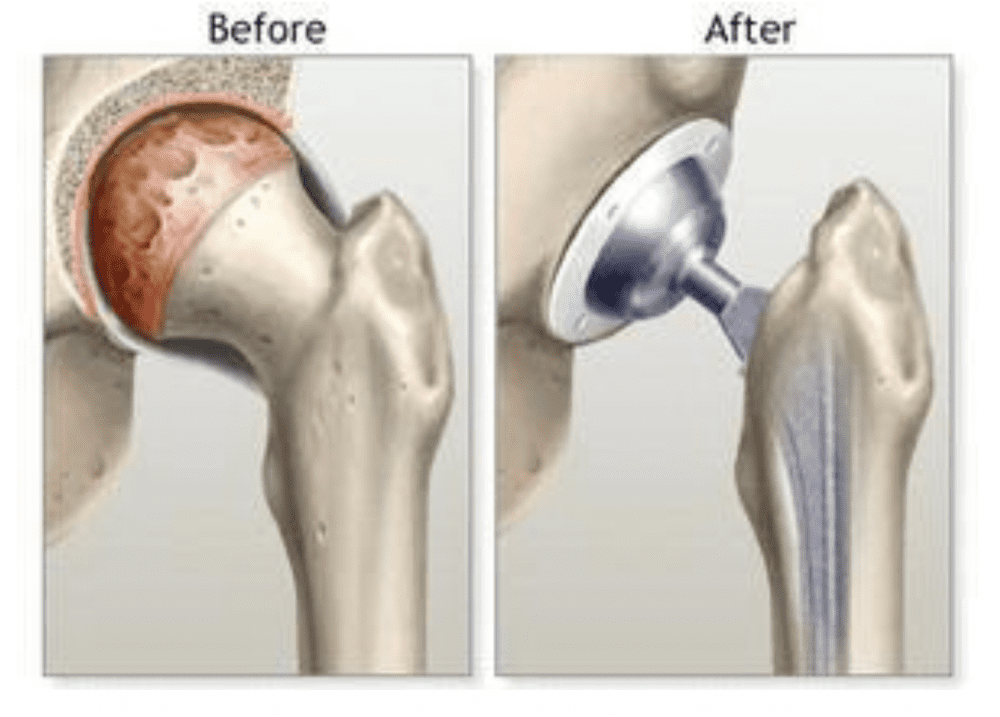
- If exercise, weight loss, and lifestyle measures aren’t helpful as well, or if OA is affecting your mobility or quality of life, replacement of the hip is necessary.
Options include
Hip resurfacing
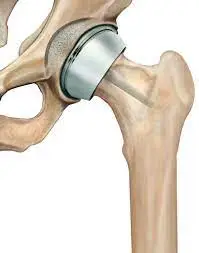
- The surgeon removes or trims the damaged bone and cartilage and caps them with a metal shell, which makes an artificial surface.
Total hip replacement
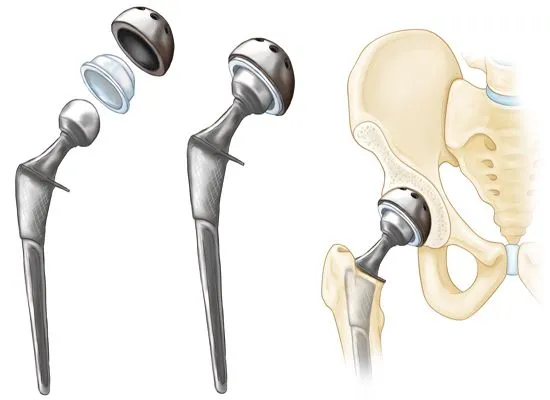
- The surgeon replaces the socket (acetabulum) and the head of the femur with an artificial joint.
Hip replacement surgery can improve quality of life by
- improving pain (pain relief)
- increasing mobility
- the risk of complications like dislocation of the hip is decreased.
Exercise after hip replacement surgery
Ankle Pumps
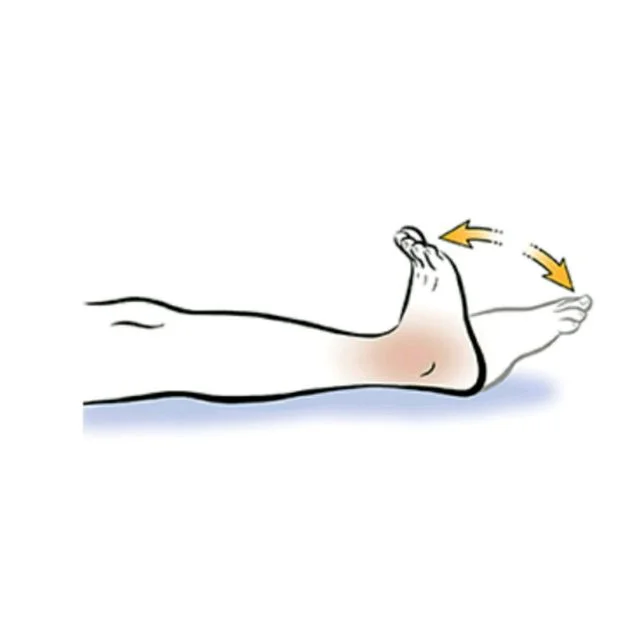
- In the supine (lying) position slowly push your foot up and down.
- Repeat this exercise several times, as often as every 10 minutes.
- If you are watching television or you’re doing rest, you should pump your feet every time a commercial comes on.
- Begin this exercise immediately after a day of surgery and continue it until you are fully recovered.
Ankle Rotations
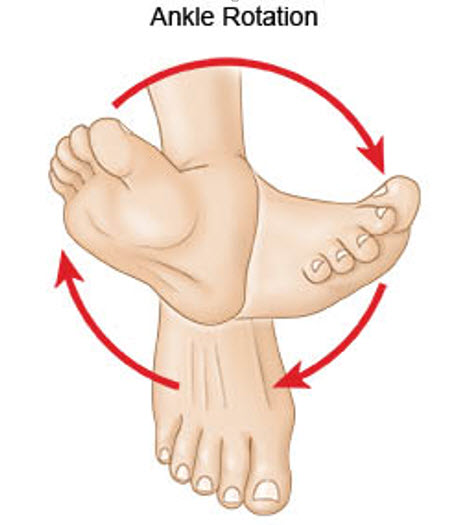
- Move your ankle inward and outward from the other foot.
- Repeat 10 times in each direction.
- This exercise should take more minutes than ankle pumps.
- Do 3 to 4 sessions a day.
Bed-Supported Knee Bends (heel dray)
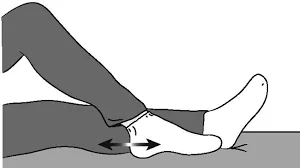
- Slide your foot toward your hip, bending your knee and keeping your heel on the bed throughout the movement.
- the movement should be done in a straight manner.
- Hold your knee in a maximally bent position where you feel no stretch or severe pain for 5 to 10 seconds.
- Straighten your leg while this your foot should be touching the ground or bed throughout the movement.
- Repeat 10 times.
- Do 3 to 4 sessions a day.
Buttock Contractions (static gluteal exercise)
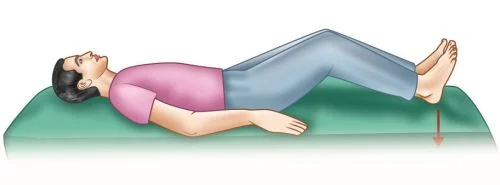
- Tighten your buttock muscles and hold to a count of 5 by pressing the back of your head and heel at the same time against the ground or bed.
- Repeat 10 times.
- Do 3 to 4 sessions a day.
Hip Abduction Exercise
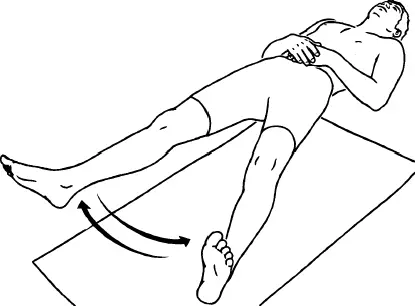
- Slide your leg out to the opposite of the other leg and another leg should be straight and stable. side as far as you can and then back. if it’s not done by yourself ask the professionals or any family member to give support throughout the movement.
- Repeat 10 times.
- Do 3 to 4 sessions a day.
Quadriceps Set (static quadriceps exercise)
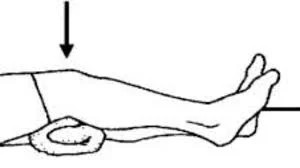
- Tighten your thigh muscle. Try to straighten your knee. Hold for 5 to 10 seconds. by putting some soft object like rolling a towel or smiley ball just below the kneecap or patella.
- Repeat this exercise 10 times during a 10-minute period, take some rest, and repeat.
- Continue until your thigh feels fatigued.
Straight Leg Raises (SLR)

- contract your thigh muscle with your knee fully straightened on the bed. then lift your leg to several inches, if possible by your self if it’s not then ask the therapist to support you throughout the movement.
- Hold for 5 to 10 seconds.
- Slowly lower your leg to the ground or bed.
- Repeat 10 to 12 times.
- do this 2 times\day.
Early Activity
- Soon after hip replacement surgery, you will begin to walk some distance in your hospital room or in the hospital lobby and perform light routine activities.
- This early activity aids your recovery and helps your hip regain its muscle strength and joint movement.
Walking
- Proper walking is the best way to help your hip joint recover. At first, you will walk with a walker or crutches with the support of the physiotherapist. the therapist will tell you how much weight to put on your leg.
- Advance your walker or crutches a short distance; then reach forward with your operated leg with your knee straightened so the heel of your foot touches the floor first simultaneously other heel leaves the ground.
- As you move ahead, your knee and ankle will bend and your entire foot will rest evenly on the floor. don’t put too much pressure on the hip.
- As you complete the one step, your toe will lift off the floor and your knee and hip will bend so that you can go for your next step. you have to Remember, to touch your heel first, then flatten your foot, then lift your toes off the floor.
- Walk as rhythmically and smoothly as you can.
Stair Climbing and Descending
- Stair climbing is the best strengthening and endurance exercise and it also requires flexibility as well as strength.
- At first, you will need a handrail for support or any walking aids like sticks and will be able to go only one step at a time. Always lead up the stairs with your good leg (unaffected) and down the stairs with your operated(affected) leg. Remember, “up with the good” and “down with the bad.”
- You may want to have someone’s help until you have regained most of your strength and mobility.
- As you become stronger and more confident and mobile, you can begin to climb stairs foot over foot. and after some days by yourself.
Advanced Exercises and Activities
The pain from your hip arthritis or any hip conditions before your surgery and the pain and swelling after replacement surgery have weakened your hip and some of your thigh muscles. full recovery may take many months.
The following exercises and activities will help your hip muscles recover fully as soon as early.
Elastic Tube Exercises
Resisted Hip Flexion
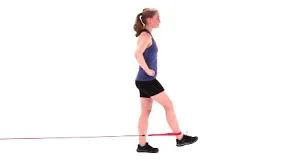
- Stand with your feet slightly apart.
- Bring your operated or affected leg forward keeping the knee straight.
- and then bring back your leg to its previous position.
- do this exercise gently and try to maintain balance throughout the movement.
Resistive Hip Abduction
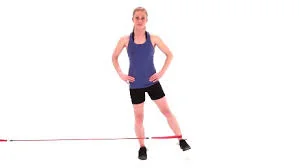
- Stand sideways from the door where the tubing is attached.
- Extend your operated leg sideways.
- and then bring back your leg to its previous position.
Resistive Hip Extensions
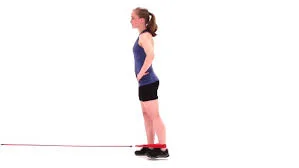
- face the door where the tubing is attached.
- Pull your leg straight back.
- and then bring back your leg to its previous position.
Exercycling
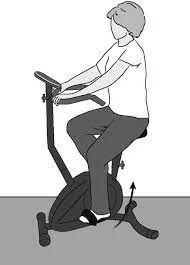
- First, adjust the seat height according to the condition or pt’s height so that the bottom of your foot just touches the pedal.
- Pedal backward at first.
- only after a comfortable cycling motion is possible in backward comfortably then allow the patient to Ride forward
- As you become stronger (after some days) slowly increase the tension in the cycle. Exercycle for 8 to 10 minutes 2 times a day at first, gradually building up to 12 to 15 minutes.
Walking
- walking is the best exercise for a normal human being in routine life to maintain health and all joints in normal conditions
- In the beginning, walk for 5 to 10 minutes, 3 to 4 times a day in a room or lobby wearing orthosis or with external aids.
- As your strength and endurance improve, and you seem to gain your muscle power back you can walk for 20 to 30 minutes, 2 to 3 times a day.
- Walking boosts your blood flow to joint damaged cartilage, giving it the nutrients necessary to provide cushion to the ends of your joints.
- Once you have fully recovered, regular walks of 20 to 30 minutes, 3 to 4 times a week, will help you gain muscle power and endurance also.
some self-care tips that help in pain relief
- Use hot or cold packs.
- Eat a balanced diet.
- Lose weight.
- Get enough rest.
- Manage stress.
- Try splints, braces, and other aids.
- Seek support.
FAQ
arthritis is a condition in which the joints become inflamed and the cartilage that lines the bones become worse.
Eventually, bone-on-bone wear occurs. As the disease extends patients often experience pain, stiffness, and instability, which cause osteoarthritis.
Osteoarthritis is the most common form of arthritis that occurs when the protective cartilage that cushions the ends of the bones wears down continuously.
people should avoid high-impact aerobic exercises, which include running and jumping rope.
Low-impact aerobic exercises, such as walking, elliptical training, and cycling, may help improve joint mobility and movement in people with hip arthritis.
Physiotherapy plays a major role in the management of patients with hip osteoarthritis. The goal is to improve strength, and mobility and increase range of motion. Physiotherapy also helps relieve pain and restores normal movement in the hip and legs and also addresses pain management and functional adaption. the strengthening and stretching exercises for the hip, and leg can reduce osteoarthritis pain and stiffness, so it is necessary that keeping those muscles strong and limber will help to prevent painful osteoarthritis symptoms and problems.
Bone and joint specialists or physiotherapists suggest that walking is one of the best forms of exercise for hip arthritis. Walking boosts blood flow to your cartilage, giving it the nutrients necessary to provide cushion to the ends of your joints.
Walk as rhythmically and smoothly as you can.
Place wedge-shaped pillows under your hip to make the hip less painful. If you don’t have a wedge-shaped pillow, try folding a towel or blanket to create a wedge shape. Sleep with a pillow between your knees that reduce stress across your hips. Put one or more pillows or fold the blanket under your knees. this positioning gives you Immediate Relief.

